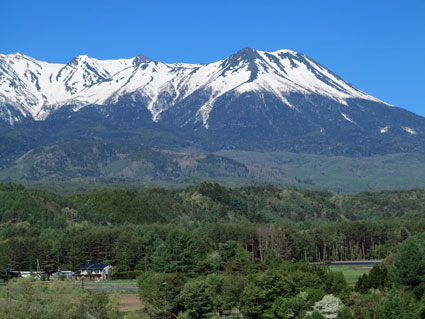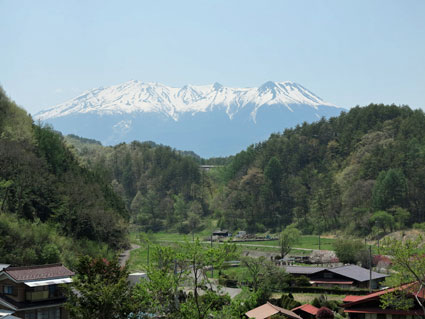Mount Ontake Hiking Gifu
Mount Ontake on the borders of Gifu and Nagano prefectures is Japan's second highest volcano after Mt. Fuji at 3,067m and Japan's 14th highest mountain.
Mount Ontake, Gifu Prefecture 御嶽山
Mount Ontake on the borders of Gifu and Nagano prefectures is Japan's second highest volcano after Mt. Fuji at 3,067 meters and Japan's 14th highest mountain.
2014 Eruption
Ontake last erupted without warning on 27 September, 2014 killing dozens of hikers. The last major eruption before that was in 1979 with a low level eruption alert in 2008.  Ontake-san
Ontake-san
Crater Lakes
Mt Ontake has five crater lakes and Ni no Ike at an elevation of 2,905 meters is the highest such lake in Japan. Ontake is a popular pilgrimage site for yamabushi (mountain priests) and many people make the ascent to the shrine at the top of the mountain during the summer hiking season. There are a number of trails to the summit starting from the village of Otaki and returning via Kurosawa.
The Hike Up
The climb takes about 5 hours to cover the 17 km to the top or about 3 hours if you start from the Ta-no-hara trailhead. There are ten stations on the ascent and visitors often stay overnight at the 8th station to climb to the summit to see the sunrise the next day.
If you wish to miss out on all that walking take the Ontake Ropeway (1300 yen single; 2400 yen return) instead to an elevation of 2150 meters - a short hike to the 7th station.
Access - Getting There
Mt. Ontake is about 100 km north of Nagoya. There are buses to Otaki and Kurosawa from Kiso-Fukushima (75 minutes) or to the Ontake Ropeway (60 minutes). From Tokyo's Shinjuku Station in the capital take a JR Azusa or Super Azusa Express to Shiojiri and then change to the JR Chuo Line to Kiso-Fukushima. Nigorigo Onsen is another popular place to either start or end a hike of Mt. Ontake.


















